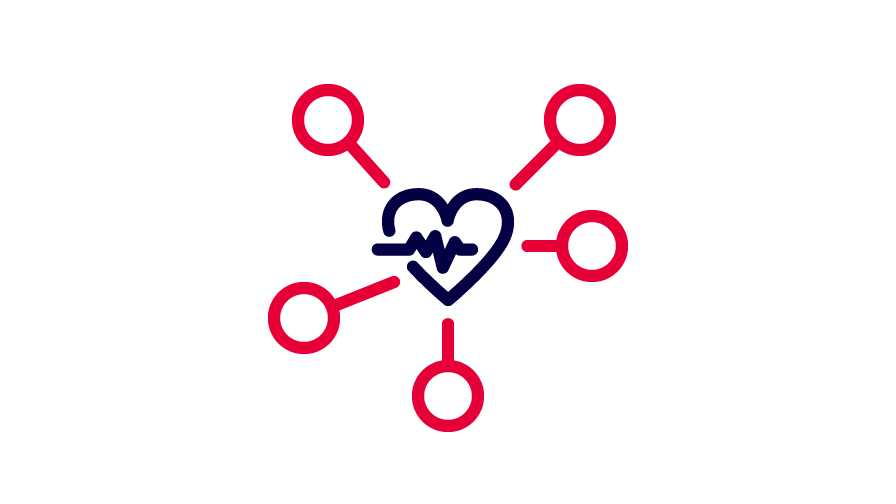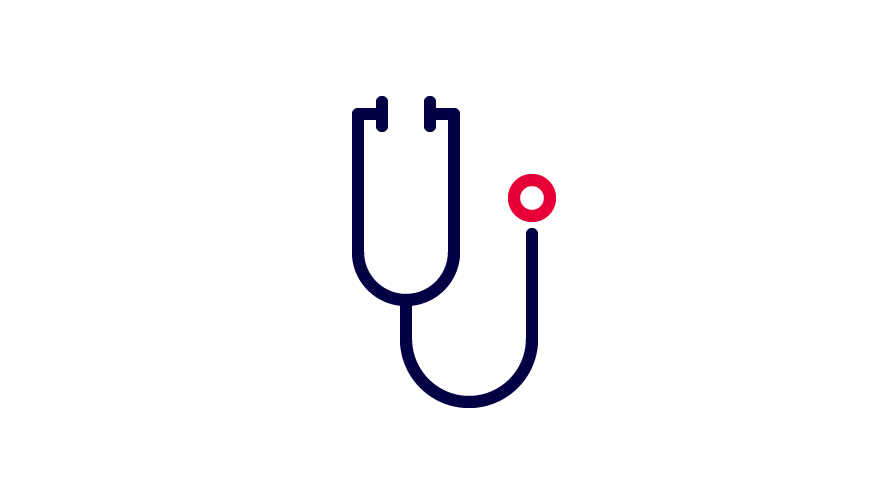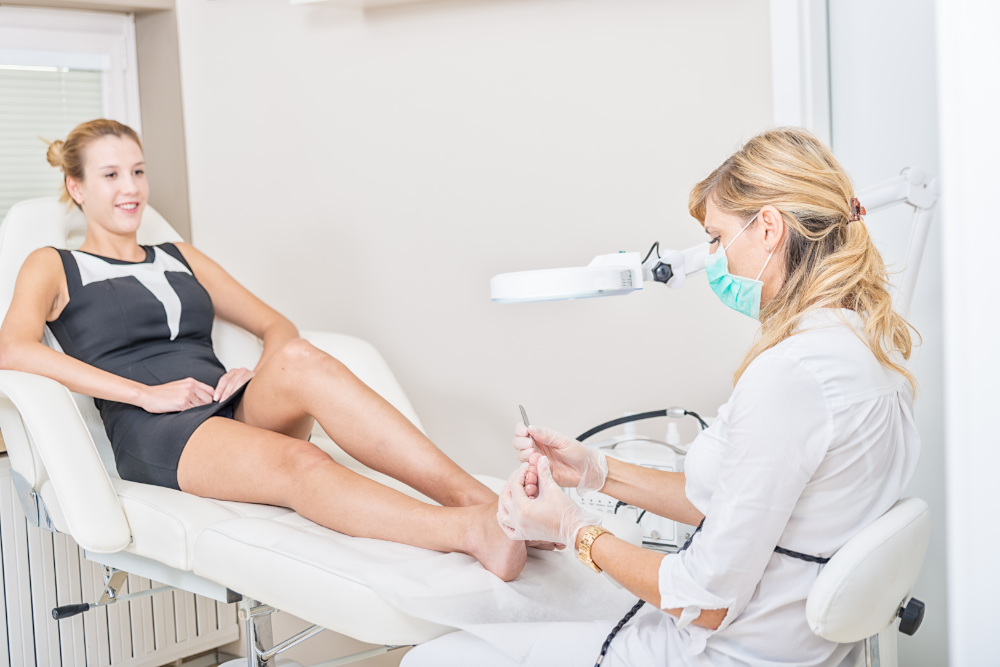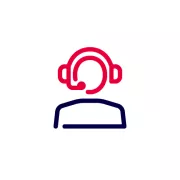


The healthcare sector is going digital: Applications like the electronic patient file (ePA), the ePrescription or emergency data are now also available to occupational therapists, podiatrists, speech therapists and emergency paramedics making it easier to exchange patient data and save valuable time in day-to-day work and in emergencies. More and more paper-based workflows are making way for digital processes. All this is made possible by the Telematics Infrastructure (TI) which connects everyone working in the healthcare sector. The TI offers nothing but benefits – from less red tape to more time for core tasks.
All that’s needed to connect to the TI is a computer (PC, laptop or similar) with a stable Internet connection, as well as a gematik-approved e-health card terminal and a connector. Only authorized institutions and persons can access the TI and have to identify themselves online. The SMC-B card for medical practices and institutions and the electronic Health Professional Card (eHPC) can be used for this. The newly established electronic health professional register (eGBR), as a central federal state office, will be responsible for issuing eHPCs and SMC-B cards to people working in unlicensed healthcare professions. Occupational therapists, podiatrists, speech therapists and emergency paramedics and emergency paramedics can order their eHPC or SMC-B card from D-Trust.


Occupational Therapists
The Electronic Patient Record (EPR) offers occupational therapists quick access to comprehensive treatment data, making it easier to plan therapy. In future, the e-prescription will allow aids such as splints and therapy materials to be prescribed digitally. Secure data exchange with doctors and hospitals is possible via the hospital information system (KIM), which promotes interdisciplinary cooperation. In addition, TI Messenger, or TIM for short, enhances communication between healthcare professionals with text messages in real time.

Podiatrists
Podiatrists benefit from the EPR thanks to direct access to important health information such as wound healing processes and infection histories, thereby improving the quality of treatment. In future, the e-prescription will make it easier to prescribe and administer podological aids such as insoles and bandages. With KIM and TI Messenger for real-time text messages, podiatrists can communicate securely and efficiently with doctors and pharmacies to optimise care.

Speech Therapists
The EPA gives speech therapists access to detailed treatment histories, making it easier to adapt speech and language therapies. In future, the e-prescription will allow necessary therapy materials such as speech training devices to be prescribed quickly and easily. KIM enables the direct exchange of therapy histories and progress reports with colleagues and doctors, thereby improving the coordination of therapy. This communication is enhanced by the TI Messenger service for text messages.

Emergency paramedics
Connection of emergency services to the TI enables emergency paramedics to have direct access to emergency data stored on the eGC (electronic health card). This may include information on pre-existing conditions, allergies, drug intolerances and long-term medication. This can be helpful in providing first aid to unresponsive patients.
What does the Telematics Infrastructure have to offer?
The Telematics Infrastructure (TI) connects the entire healthcare system and is the data highway for all stakeholders. It enables electronic processing, secure protection and transmission of patient data, and it speeds up treatment processes while simplifying communication between medical staff. The TI thus ensures less paperwork, greater flexibility, enormous time savings, forgery protection as well as transparency between patients and practitioners. D-Trust, a company of the Bundesdruckerei Group, supplies the electronic Health Professional Card (eHPC) and the SMC-B card for medical practices or institutions, i.e., essential components for access to the digital health network.
Occupational therapists, podiatrists, speech therapists and emergency paramedics and emergency paramedics benefit from various applications within the Telematics Infrastructure that make everyday work easier, reduce red tape, speed up processes and protect data transmission and documentation. Many digital applications are already available to you in the TI.
Applications in the TI
The electronic patient file is the heart of the Telematics Infrastructure. Anyone insured under the statutory health insurance scheme receives this as an app free of charge. Service providers with access authorization can store all relevant medical information in the electronic patient file, such as the emergency data record, medication plan, therapy measures or doctor’s letters. In future, it will also be possible to integrate the patient’s vaccination record, dental bonus booklet or maternity passport.
The patient is the only person who can decide who is to view which documents in their electronic patient file. No information is lost even when the insured person changes to a different statutory health insurance provider.
The electronic medication plan contains information on the patient’s medication and is stored on the health card. All service providers authorized to access the Telematics Infrastructure can view the medication plan quickly and at any time.
Emergency data is useful patient information that can be used in an emergency. This can include pre-existing conditions, intolerances, operations, allergies or pregnancy. In addition, the emergency data can include diagnoses, medication and contact details of attending physicians or relatives who are to be informed in case of emergency. Patients can add personal documents, such as an organ donor card, a healthcare proxy or living will. The patient alone decides whether or not to have an emergency data record created and which of the existing information is to be integrated.
The ePrescription enables doctors to also issue digital prescriptions using a qualified electronic signature, rendering the old paper document obsolete. Patients can use an app to retrieve their prescription and hand it in to a pharmacy. In the future, the electronic medical services statement will also be implemented similar to the ePrescription. Occupational therapists, podiatrists, speech therapists and emergency paramedics will then be able to have patients digitally sign their statement of services provided.
KIM enables secure and direct communication between all professional groups participating in the Telematics Infrastructure. KIM users can use this to send and exchange among themselves doctor’s letters, treatment and cost plans, findings, such as X-rays and laboratory data, invoices as well as certificates of incapacity to work.
TI‑Messenger supplements KIM with mobile ad-hoc communication. Be it queries about prescribed medication, information about laboratory findings or call-back requests, TI‑Messenger will soon enable all health professionals throughout Germany to communicate with each other in real time via text messages. This will save valuable time on all sides.
To ensure that all stakeholders in the healthcare system can really be connected to the TI, the costs are refinanced for the most part by the National Association of Statutory Health Insurance Funds (GKV-Spitzenverband). This concerns both the costs for technical equipment (card reader and connector) and ongoing operating costs for the eHPC and SMC-B cards.
eHPC and SMC-B as the key to the Telematics Infrastructure
Only registered institutions or users can access the Telematics Infrastructure (TI). This prevents any fraudulent access to sensitive data. Two cards are required for secure identification. With the electronic SMC-B card for medical practices and institutions, the participating healthcare institutions authenticate themselves as a medical institution vis-à-vis the services of the TI.
To obtain an SMC-B card, you need the electronic Health Professional Card (eHPC). Both cards can be ordered from D-Trust.
Electronic Health Professional Card (eHPC)
The electronic Health Professional Card (eHPC) is a personalized smartcard that is used by stakeholders in the healthcare sector to identify themselves to the TI. In an effort to prevent misuse and ensure sufficient data protection, Germany’s eHealth Act stipulates that the personal data stored on the health card may only be accessed with an eHPC. In addition, the eHPC uniquely identifies the holder as a member of the respective professional group and enables a legally binding electronic signature within the TI, the so-called qualified electronic signature (QES). This is mandatory for many medical applications, such as digital laboratory referrals, ePrescriptions or electronic certificates of incapacity to work. This makes the eHPC an indispensable tool for healthcare workers.
Advantages at a glance
- Secure access to the Telematics Infrastructure and the electronic health card
- Qualified electronic signature
- Encryption of medical data for transmission
Apply for an eHPC and order online from D-Trust
Occupational therapists, podiatrists, speech therapists and emergency paramedics receive their electronic Health Professional Card from the newly created electronic health professional register (eGBR). The task of the eGBR is to verify the applicant’s professional license. This also requires reliable identification of the applicant. Once your professional license has been confirmed, you will receive a process number from the eGBR. You can use this number to order your electronic Health Professional Card from an approved card provider.
The eHPC is ordered from D-Trust using a dedicated portal. After entering the transaction number, the applicant receives a pre-filled application. All the applicant has to do is to complete the application, print it out and send it to D-Trust. Valid identification must also be provided, for instance, using the PostIdent procedure. Once valid identification and the signed application documents have been submitted, the eHPC can be produced and then, once approved, sent by the eGBR.
Downloads
Do you have questions regarding the eHPC? Contact us.
+49 (0)30 2598 - 4050
ehealth-support@bdr.de




